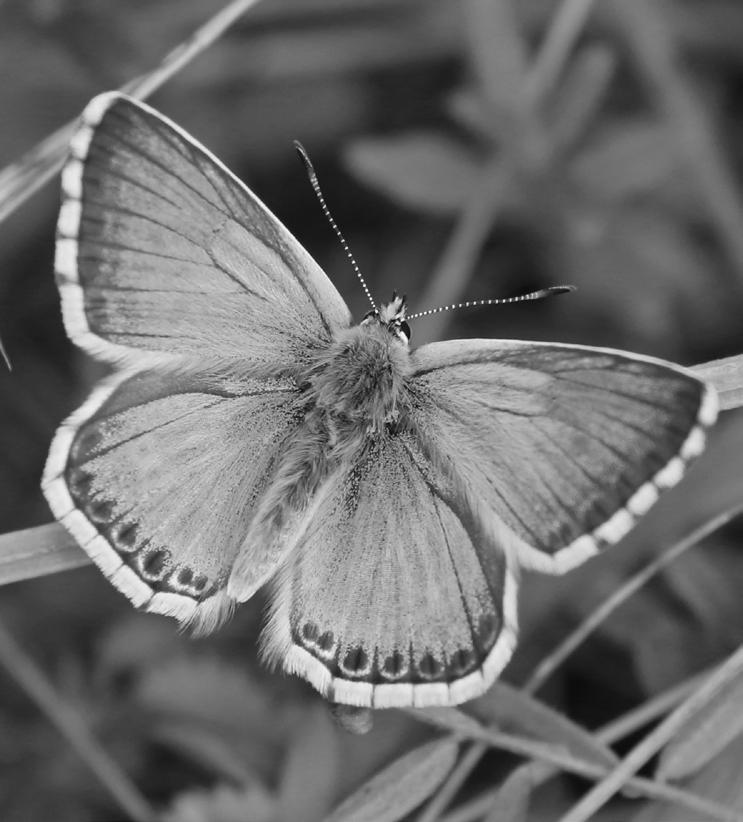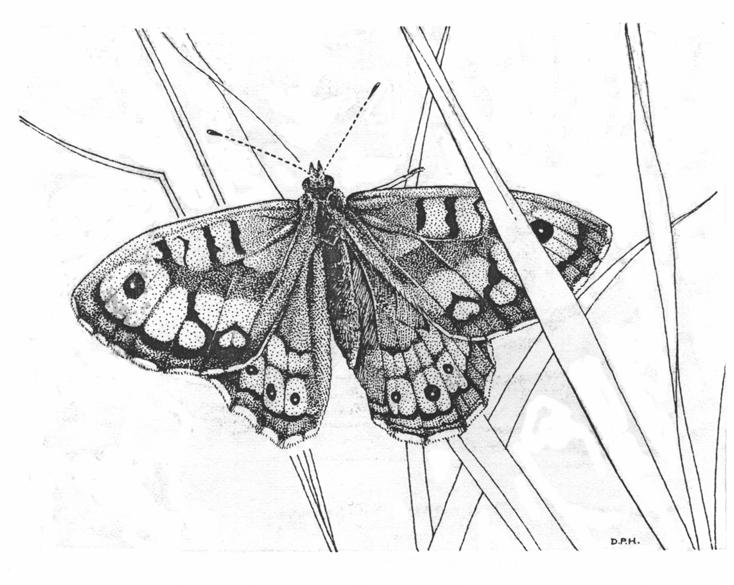
3 minute read
Editorial Trevor Goodfellow
The Wider Countryside Butterfly Survey
Twm Wade
The Wider Countryside Butterfly Survey (WCBS) is a scientifically sound method of assessing the abundance and how widespread common species of butterflies are across the UK. Ordnance Survey (OS) 1Km squares are randomly selected across the country and volunteers walk the square taking two separate routes, two or more times in the year. They count the butterflies they identify that are within a 5m x 5m x 5m zone and report their findings on a system called “UKBMS”. Every butterfly record matters.
The outcome of the surveys in Suffolk are nearly predictable. The most abundant was the Meadow Brown with 848 recorded. This was followed by the Small White, 797, and Large White, 727. The least abundant are the Silver-washed Fritillary, 2, and Clouded Yellow, 3. The next was the Green Hairstreak, 11, seen in April, followed by the Painted Lady (12). The most widespread was the Small White recorded in 27 OS squares in Suffolk. It was followed closely by the Large White, 26, and jointly the Meadow Brown and Gatekeeper with 24.
It is good to see that we are getting more early records thereby picking up spring species like the Orange Tip and Green Hairstreak. I can only thank all the volunteers for their contribution to the data. Without them walking, spotting, recording and reporting we just would not know the ups and downs of the supposedly common species; their numbers and distribution. Well done and thank you.
For those interested in participating in the WCBS scheme please visit the branch website to see if there is an OS square available in your area or contact Twm Wade for more information.
Twm Wade Transect Co-ordinator Suffolk Branch Butterfly Conservation 01638 577446 07743 305363
Every butterfly record matters
Chalkhill blue by Trevor Goodfellow
Search for Wall Brown at SWT Carlton Marshes Saturday 11th August 2018
Peter Maddison
A sunny morning with a light westerly wind made a favourable start for the 11 of us who set off across the reserve. Robert Quadling, our leader, is a voluntary warden at SWT Carlton Marshes and his knowledge of the site, its butterflies and other wildlife was much appreciated. A Common Blue in the car park picnic area was a good omen and it wasn’t long before Meadow Browns, Gatekeepers and the whites were recorded. A diversion across a meadow to a dyke filled with Water Soldiers brought us to one of the highlights of the day: The Fen Raft Spider Dolomedes plantarius which is thriving on the reserve. Not easy to spot but once our focus was in, female, male and young spiders were all identified. A very nice diversion….and then back to butterflies. Although the bare earth tracks that hold heat are favoured basking sites of the Wall, the sundrenched river bank, which in parts is sheltered from cooling winds, is also worth surveying. In the last couple of years work to reshape some of the more distant river bank has not yet provided Wall habitat, but a Painted Lady and a couple of Red Admirals were nectaring on thistles on the new bank. A Chinese Water Deer wandered through a meadow to the north, on land that the SWT has newly acquired and where work will be starting soon on the significant Suffolk Broads project.
Towards the pumping station where the vegetation is established, hot spots abound, and 3 Walls were seen. Visitors hoping to see this threatened species, the habitat and number of which are diminishing each year in the county, would do well to peer carefully at the sundrenched concrete walls of the structure where basking Walls might be found. Our route took us back across the reserve, along reed-fringed tracks where Meadow Browns, Gatekeepers, Large, Small and Green-veined Whites, Comma, Red Admiral and Small Copper were seen. Dragonflies included Migrant and Brown Hawkers and Blue-tailed Damselflies, and a Grass Snake. During a picnic lunch at the Visitor Centre more Common Blues were spotted, and a Holly Blue was seen near to Ivy on an overhanging Hawthorn. In the afternoon one or two members of the group stayed on for a while to walk the river wall adjacent to White Cast Marsh where a spiralling and chasing pair of Walls was watched for several minutes.
In 2019 search for what has probably become Suffolk’s rarest breeding species.
See our 2019 Events Programme for details of a repeat walk at SWT Carlton Marshes, a hot spot in the north east of the county.

Wall brown by Douglas Hammersley






